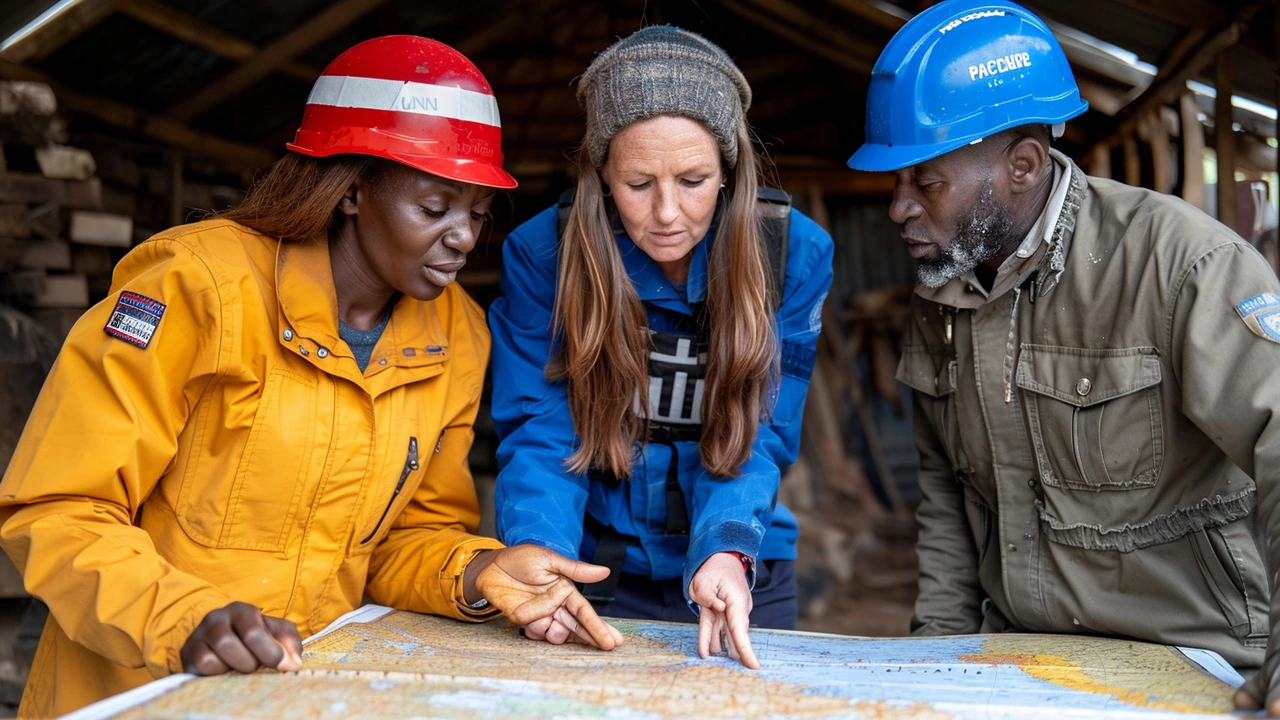Conflict doesn't vanish after a ceasefire. It changes shape, shows up as local tensions, resource fights, or political standoffs. If you work in peacekeeping, local leadership, or community aid, you need clear, practical steps you can use right now to reduce harm and build trust.
When tensions spike, act fast. Separate the parties briefly to cool tempers. Use short, neutral messages: acknowledge feelings, state safety rules, and offer a simple next step. For example, tell both sides: "We hear you. No violence now. We'll meet in one hour to talk." That pause often prevents a flare-up from becoming violence.
Keep communication plain. Avoid blaming language. Use questions that invite solutions: "What would make this meeting safe for you?" Not every situation needs a long negotiation. Short, firm actions—clear boundaries and visible safety measures—buy time for better talks.
Start negotiations with tiny, achievable agreements. If parties agree on one small thing—a shared patrol schedule, a temporary market area, or a neutral mediator—you build momentum. Write down the small wins and confirm them publicly. That public record reduces backtracking.
Use local leaders and trusted intermediaries. They know social cues, clan ties, and what language calms people. Train them in simple techniques: active listening, reframing “you vs. us” claims into shared problems, and asking for small commitments. These techniques scale better than imposing outside solutions.
Track commitments. Create a short checklist for every agreement: who, what, where, by when. Check in weekly. If a promise slips, address it quickly and privately before it becomes a public grievance.
Use simple tools for early warning. Community hotlines, SMS alerts, or a local liaison can signal rising tensions before they explode. Even a single reliable contact who reports rumors or troop movements helps planners act sooner.
Think beyond security. Conflict management includes livelihoods, service delivery, and justice. If markets close or water access is blocked, tensions rise fast. Coordinate with NGOs and local governments to restore basic services quickly. Practical fixes—repairing a pump, reopening a school—send a strong signal that life can return to normal.
Measure progress with two questions: Are fewer violent incidents happening? Do local people feel safer? Use simple surveys, focus group notes, and incident logs. Numbers matter, but so do local perceptions.
Finally, expect setbacks. Conflict shifts. When one problem is solved another may appear. Keep routines: short pauses to cool down, small public agreements, local mediators, and quick repairs to services. These habits reduce the chance that a small dispute becomes a crisis.
If you want practical templates for agreements, checklists, or short scripts for mediators, our tag page gathers related posts and real examples from peacekeeping missions. Use them, adapt them, and share what works in your community.

Understanding the pivotal role of peacekeeping in managing conflicts can shed light on how international and local entities collaborate to restore tranquility in tumultuous regions. This comprehensive guide delves into the intricacies of employing peacekeeping forces, negotiation tactics, and rebuilding efforts, discussing their efficacy and challenges. By examining historical success stories and learning from past obstacles, this article provides insightful perspectives on crafting enduring peace. The aim is to illuminate the path toward more effective conflict resolution, highlighting the indispensable role of peacekeeping operations.
